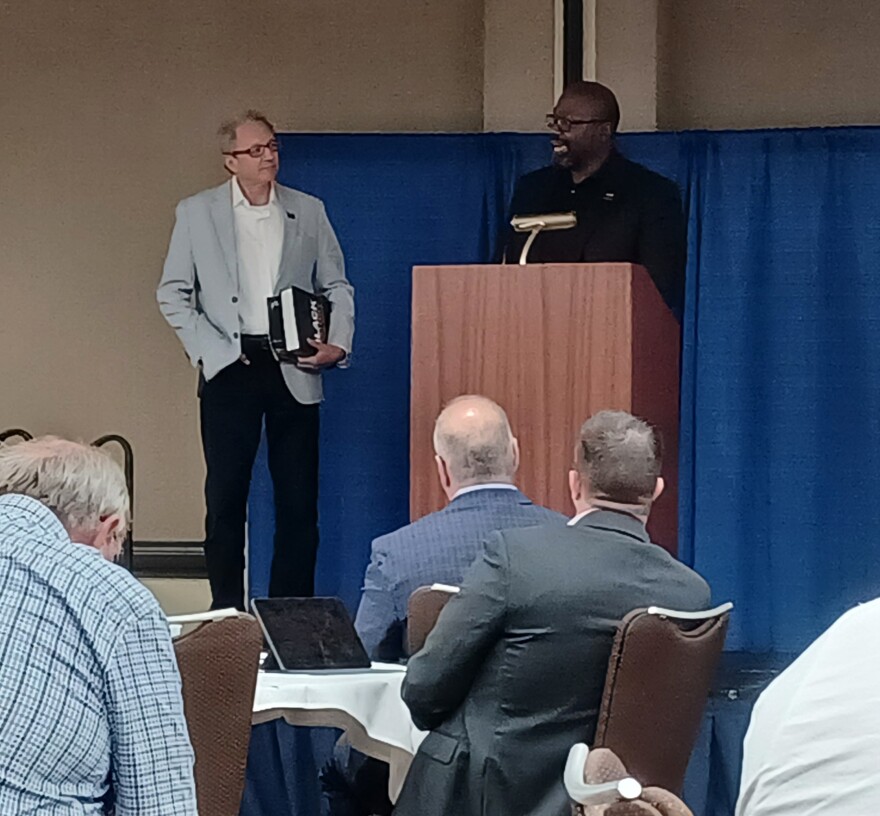The 2022 Peoria City-County Racial Disparities Report issued last week identifies areas of inequity in economic development, jobs, housing, child and youth development, mobility and transportation, justice, health and human services, information technology, environment and climate impacting Black residents of Peoria.
Though these inequities can be found in most any city of Peoria’s size or larger, the disparity sometimes far exceeds the national average, according to Charity A. Gunn, racial justice and equity coordinator for Illinois Central College.
“The purpose of the report was to compile and analyze the systemic and historical racial inequities in Peoria County, their causes, and how those systemic inequities and irregularities show up in Peoria in present-day,” said Gunn, who compiled the countywide report and summarized its findings during the City of Peoria’s first Joint Commission on Racial Justice and Equity (JCRJE) meeting, held June 16 at the Peoria Civic Center.
“Organizations such as this commission can make a measurable impact on increasing equity and reducing the disparities,” Gunn added, before highlighting some of the report’s findings. They include:
● The pre-Covid unemployment rate for Peorians stood at 7.25 percent for whites and 16.2 percent for Black residents.
● 36 percent of Black residents of Peoria live in poverty, compared to the 19 percent national average.
● 90 percent of those living in poverty in Peoria do so in the Southside, the only racially/ethnically concentrated area of poverty in the Peoria metropolitan area.
● Only 32.6 percent of Black residents own their homes in Peoria, compared to 76.1 percent of white residents.
● Peoria residents’ median household income is $51,771, but is only $28,019 for Black families. The Southside median family income is less than half of the average resident family income in the city of Peoria.
● 79.6 percent of Black adults in Peoria earned a high school diploma, which is 13.3 percentage points below the white high school attainment average and one of the largest such attainment gaps in the country.
● Black students are 2.9 times more likely to be suspended than their white peers in Peoria Public Schools, and are 2.8 academic grades behind white students.
● Fall 2021 student enrollment at Illinois Central College included 808 Black students and 5,512 white students.
● In Peoria County, Black people between the ages of 25 and 64 are dying at a rate more than twice that of their white counterparts.
● 58 percent of traffic stops in Peoria involve a Black driver. Only 38 percent involve Caucasian drivers, according to the American Civil Liberties Union.
● Those residing in the 61605 and 61603 area codes in Peoria were among the highest in the state for children with elevated lead levels in 2014.
Peoria established its ad hoc committee to explore racial inequities within the county in June of 2020. The JCRJE brought together local government organizations, non-profits, health care representatives and community partnerships following the murder of George Floyd by white Minneapolis-St. Paul police officer Derek Chauvin in order to consider ways to balance racial inequities within the county, according to Andrew Rand, Peoria County Board chairperson.
“This commission represents a commitment to our community that we will work together for change, and also serves to acknowledge that your voices and effort are critical to making change happen,” said Rand. “Following George Floyd’s death, we saw waves of activism and a call to recognize and renew the fight to end racism. This commission carries that torch today with a stated vision to end racism in city and county government, and to achieve racial equity and justice across our community.”

Attending the inaugural JCRJE annual meeting were Dr. Walter Milton and Dr. Joel Freeman, co-authors and co-founder of the textbook Black History 365 and BlackHistory365Education.com, an academic educational website utilized in Peoria Public Schools and around 150 other U.S. school districts. Milton traveled to Peoria to advise members of Peoria’s fledgling racial justice commission in 2020, and returned last week to praise the group’s efforts to date.
“We are in a room filled with merchants of hope, with a vision to move forward,” Milton told the more than 100 JCRJE members, city leaders and guests who attended the June 16 meeting. “This is your epoch; this is the dawn of your new beginning. I believe that Peoria has a capacity to become a national model. I can definitely envision you guys taking the synergy, the creativity and also the symbiotic relationship you are developing here and spreading that across the world.”
The key to reversing systemic racism in communities lies in youth education and participation, according to Freeman. “I really think that K-through-12 have the best solutions gurgling around their heads,” he said. “Even during the struggle for civil rights, it was the young children leaving school (and marching) that evoked the change around civil rights-- that’s what changed the hearts of so many people watching on TV. Children again can lead the way.”
Racial dividing lines were firmly established in Peoria in the 1950s when the construction of Interstate 74 through the heart of the city split the town in half, creating a culture of neighborhood decay and high crime rates south of the Murray Baker Bridge, Gunn noted.
“This completely cut and destroyed the economy of an entire Black neighborhood from the (town’s) primary economic center, which resulted in a systematic decline in quality of life that has persisted over many generations,” she said.
Also speaking during the meeting were Peoria Mayor Rita Ali and JRJCE steering committee co-chairs Mary Peterson and Tim Bertschy. Those who would like to acquire a copy of the 2022 Peoria City-County Racial Disparities Report may contact Gunn via email at cg558@icc.edu.


